Buddhism and Hinduism
Buddha compared Brahmins to dogs & concluded dogs were better. It was done in Sona Sutta (Dog Discourse). But this Sutta has nothing to do with Dogs. It is a rant against Brahmins. Dogs feature only when they have to be compared with Brahmins. This sutta is about Buddha’s stereotyping and generalization against Brahmins. He begins by saying that the Brahmins of his time mated with females of all backgrounds. He compares Brahmin sexual mating patterns with that of dogs. Here Buddha condemns Brahmins of his time for intermarrying with other varnas/communities and compares them with dogs who mate with every breed. This is not an innocent comparison. The sexual behavior of dogs is known for its licentiousness and promiscuity. This is the reason why words like “bitch” denoting dogs are used as a grave sexual insult. Although modern Buddhists flaunt egalitarianism now, for the historic Buddha intercaste marriage was a horror that amounted to licentious social behavior resembling dogs. To push further his caricature that Brahmins were licentious like dogs, he then accuses Brahmins of indulging in sex even during periods. Buddha then makes his third accusation. He says all Brahmin males of his time buy and sell females. Note the gross generalization and stereotyping.
Buddha then condemns Brahmins of his time for earning money. Note that according to Buddha a brahmin has to either beg for food or starve himself to death. He has no right to earn or stash anything. Buddha then condemns all Brahmins of his time for overeating and “swelling their bellies”. The fat tummy brahmin is a very common stereotype that Buddha also uses.
In every comparison, the dogs come out better. Buddha makes these laughable claims in the process
- Dogs are not as licentious as Brahmins
- Dogs don’t mate during periods unlike Brahmins
- Dogs don’t sell their women unlike Brahmins
- Dogs eat only twice unlike Brahmins
Stereotyping is a very common weapon used in racist generalization.
- Did buddha enter the private bedrooms of every brahmin house to check whether Brahmin females mated during periods?
- Did he take a survey to check that every Brahmin sold his wives?
There is no evidence that the Brahmins of Buddha’s time were more lustful voracious wife-sellers than other communities (I would like to see if such evidence exists), but it can be said that Buddhist monks themselves indulged in winemaking, intoxication, and fraud counterfeiting.
Creating an imaginary past caricature for appropriation to use as a stick with which to beat the current community is a common trope in religious polemics. When Prophet Mohammed extolled ancient Jews like Moses, he had no love lost for Jews of his present.
Buddhist monasteries were full of intoxicated Buddhist monks. Wine production in ancient India was a business over which Buddhist monks held a monopoly. During excavations in Swat, Archaeologists found wine-making distilleries inside Buddhist monasteries. Buddhist monks loved to indulge in wine revelries.
During ASI Nagarjunakonda excavations, a mint machine was found in monasteries. In the Satavahana state, no one except the king had the right to mint coins. The archaeologist Longhurst concluded that Buddhist monks “made their own coins”. In other words, they indulged in counterfeiting.
A Sculpture from the Buddhist center of Nagarjunakonda proudly displays devout Buddhist Ikshavaku king Virapurishadatta trampling a Shiva Linga with his feet (c.3rd century AD)
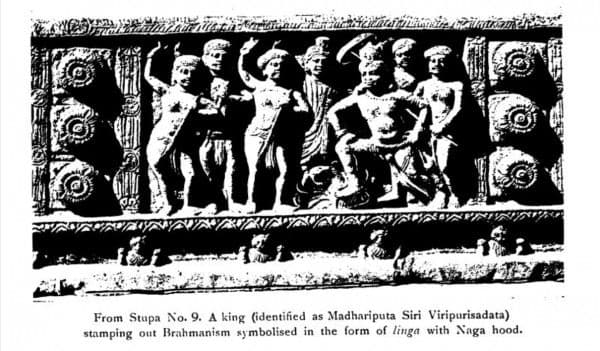
Buddhists later invented a deity named Vignantaka. Such a deity does not exist in the early Pali canon. This deity Vignantaka is always shown trampling Hindu god Ganesha with his feet.
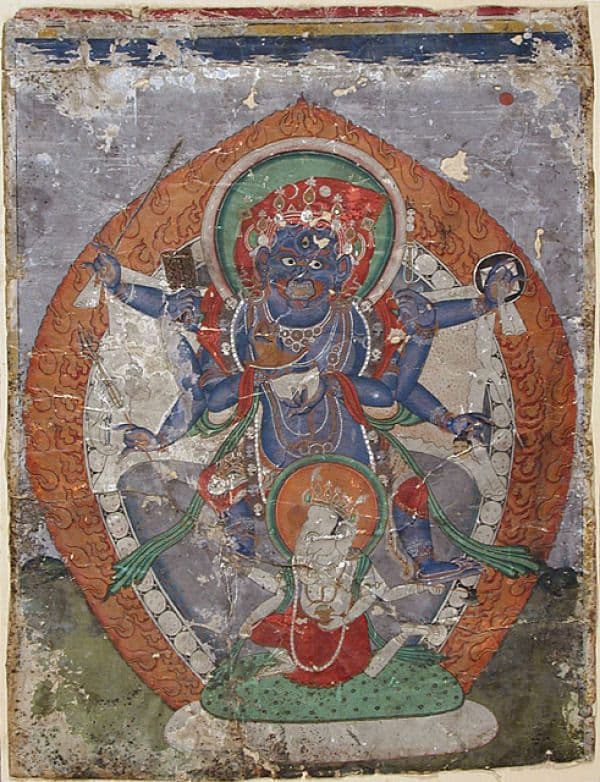
In their scriptures, Buddhists also circulated stories of a Boddhisattva named Vajrapani killing Hindu God Shiva. Shiva is described as a very malevolent being. He deludes people with his malevolent Shiva Bhakti. Bodhisattva Vajrapani orders Shiva to accept Buddhism. Shiva does not comply. A battle ensues. Shiva loses the fight. Both Shiva and Durga fall at the feet of Bodhisattva Vajrapani. Yet, Shiva is eventually killed by this Bodhisattva.
The Buddhists also invented a deity called Trailokyavijaya. He is absent in early Buddhist texts. This Buddhist deity kills Shiva. He stands on Shiva’s decapitated head and tramples Goddess Parvati’s breasts with his feet.
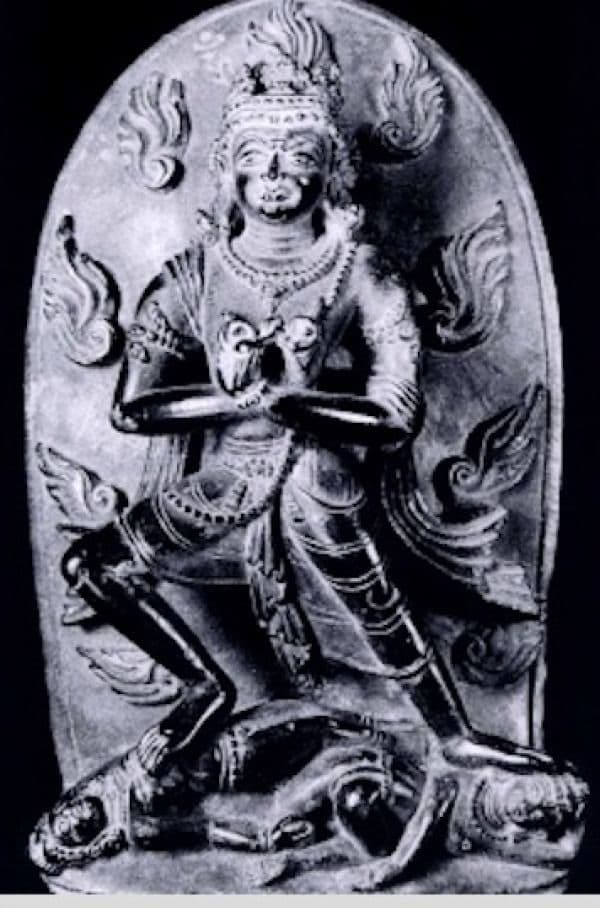
Buddha also had a lot to say about ancient Indian epic characters revered by Hindus. About Draupadi, Buddha says in Kunala Jataka that although Draupadi (Krishna/Kanha) was wed to five Pandava princes, she lusted for many more and she “became the whore of a hunch back dwarf”. Buddha accuses Sati Draupadi of having an illegitimate affair with a hunchback dwarf. In Dasaratha Jataka, he says Rama and Sita were biological siblings, thereby reducing the “Sita Rama Kalyana” performed by Hindus every year to mere sibling incest.
Once upon a time, Hinduism was the largest religion in Cambodia. Angkor wat was the largest Hindu temple in the world. Today, there is no Hinduism in Cambodia. Like most Hindu temples, Angkor wat was converted to a Buddhist temple. Even eight-armed Vishnu Murti was converted to Buddha.
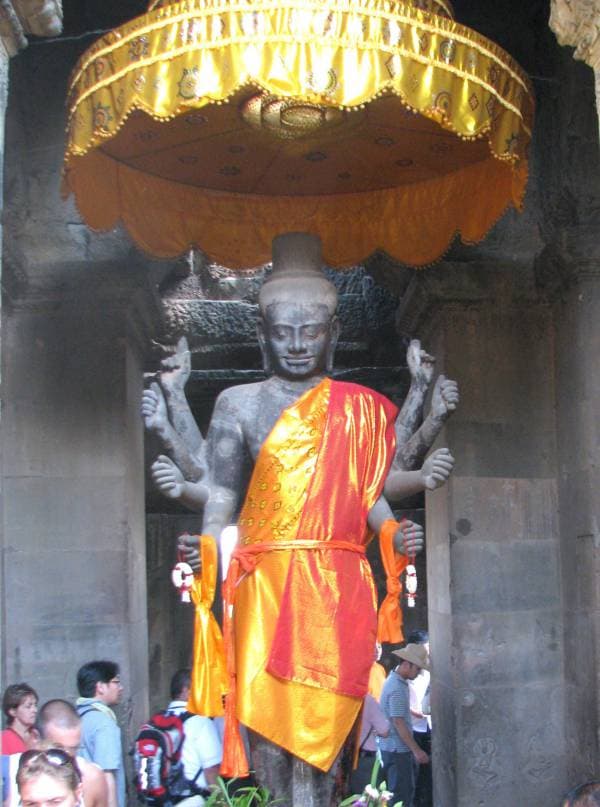
Even Buddhist primary sources &historical chronicles themselves admit that Shankaracharya defeated several Buddhists in debates. Writing in the 16th century, Taranatha the great Buddhist scholar admits that Shankaracharya routed Buddhist scholars in debates. When he entered into debates, the Buddhist Bhikshus said " It is very difficult to defeat him"
Taranatha says “In Bengal, The young Buddhist scholars believed they were more skilled than Shankaracharya. Inflated with vanity, they entered into debates with Shankaracharya and were all routed. As a result, Buddhism in Bengal was routed and Hinduism reestablished. Likewise in Odisha, Shankaracharya’s disciple Bhattacharya routed the Buddhists in debates.”
There was an Upanishad named Allopanishad which declared Akbar was an incarnation of Vishnu. So, this claim could be a made-up one too.
Duttagamini (150 BC) was a devout Buddhist king. He killed lakhs of Hindu Tamils. He feared he won’t go to heaven for his deeds. But Buddhist monks assured him: “You will surely go to heaven(swarga). There is no sin in killing unbelievers(Hindus) who were just like beasts”
Source: Mahavamsa 25.106 Translation: Bode Mahanama; Mabel Haynes; Wilhelm Grieger
The Sinhalese Buddhist Chronicle Mahavamsa admits that their Tamil Hindu rival Elara Chola was a very righteous king who ruled with justice towards friend and foe alike.
Far from raiding any Buddhist or Hindu temples, Elara Chola was so righteous that he spent 15,000 coins to repair and Buddhist stupas as compensation for accidentally stepping on a Stupa with his chariot. Likewise, even the Hindus remember Elara Chola as “Manu Niti Chola”. He was known for ruling the kingdom righteously according to the laws of Manu and a large statue commemorating Elara holding Manusmriti in his hand is installed on the premises of Chennai High court.
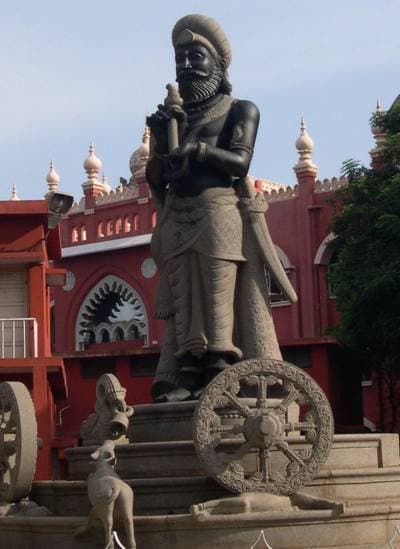
Elara Chola was cremated at the Dakhhina Stupa according to Mahavamsa. Even today, his tomb is venerated by both Tamils and Sinhalese. When Elara found out that the calf of a cow was killed under his son’s chariot, he ordered the execution of his own son to serve justice to the cow. For thousands of years, Elara Chola served as an icon for justice for the Hindu kings of Tamilakam.
Despite Elara’s righteousness, the very idea of a Hindu king ruling over the Buddhist population was intolerable to Duttagamini. He declared that his mission was to “establish the doctrine of Sambuddha” and waged war on Elara Chola. Duttagamini attacked not just soldiers. He even slaughtered the unarmed Hindu Tamil citizens of Vijitanagara.
Source: https://twitter.com/BharadwajSpeaks/status/1385087652374859777
Brahmins had the opportunity to convert the Chinese emperor to Hinduism yet failed because the Brahmin who challenged the Buddhist monk to the debate wasn’t well prepared like him. This is mentioned in “Zhipan’s Account of the History of Buddhism in China: Volume 1” by Thomas Jülch.
Source: https://twitter.com/porbotialora/status/1295053586120892417
Source for most of this writeup: https://twitter.com/BharadwajSpeaks/status/1383090947467014144 & https://twitter.com/BharadwajSpeaks/status/1385087652374859777